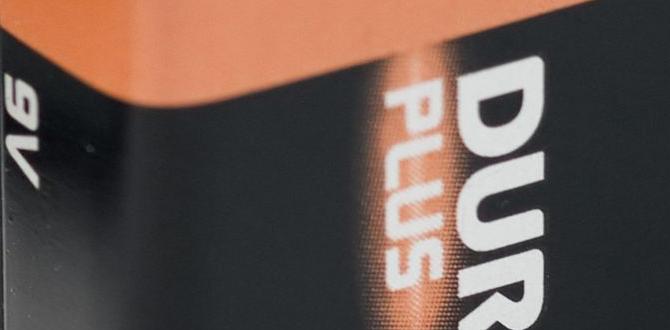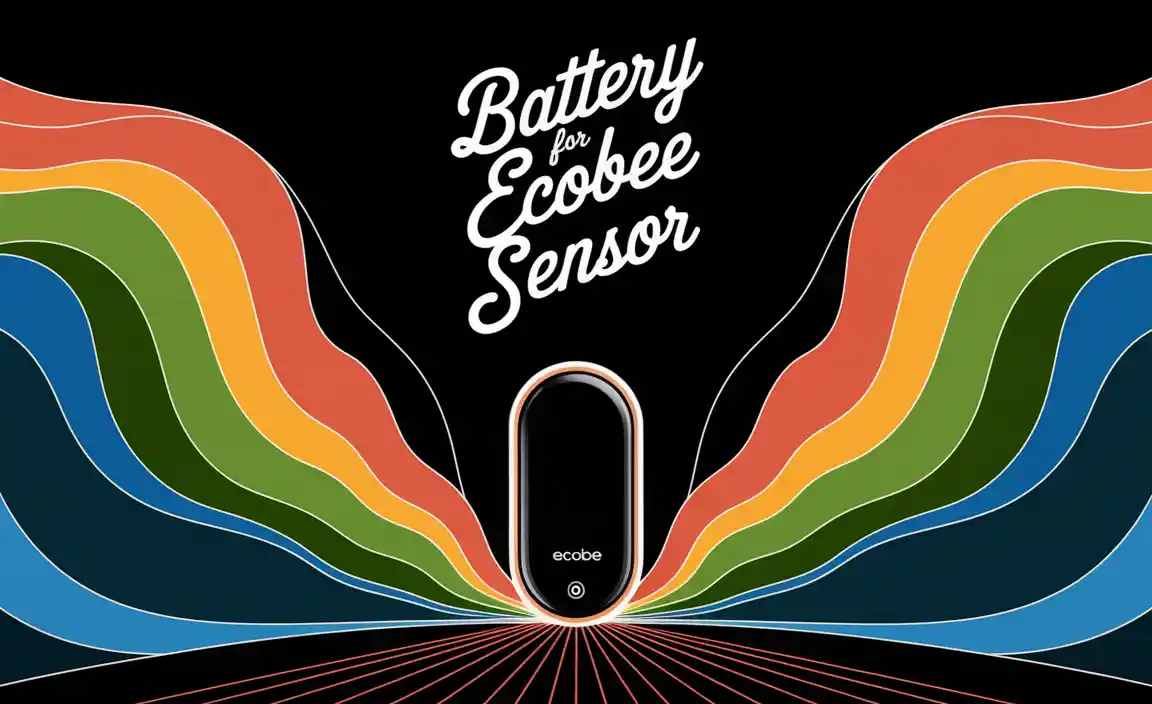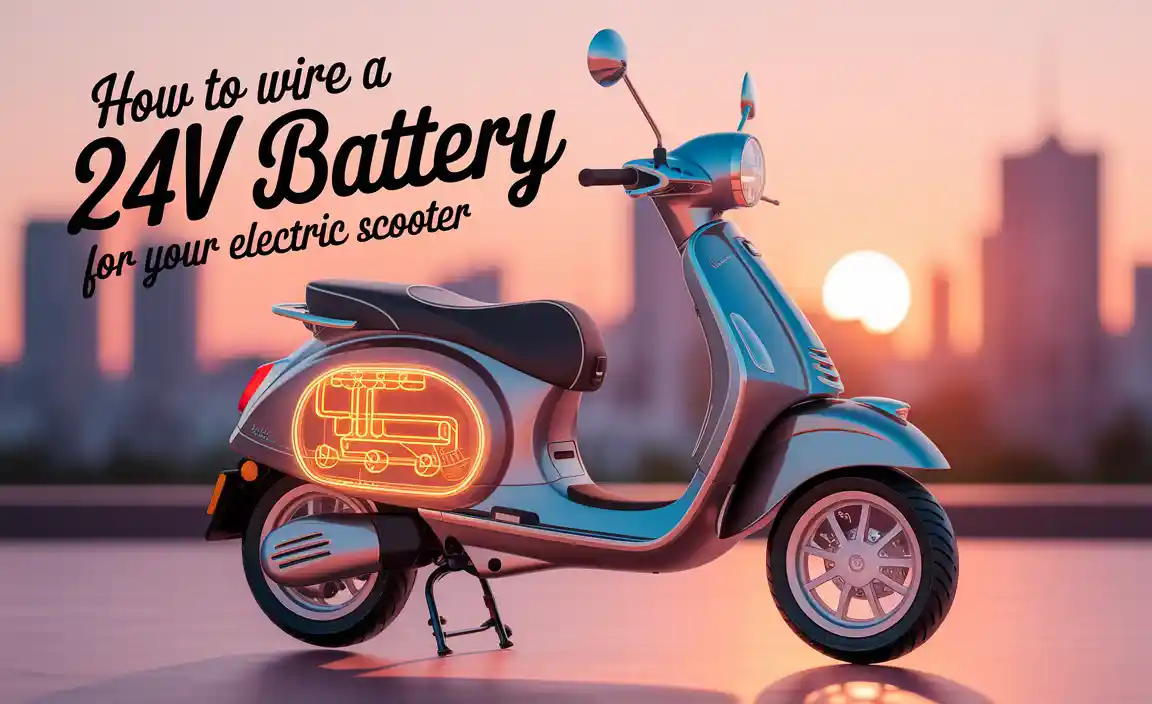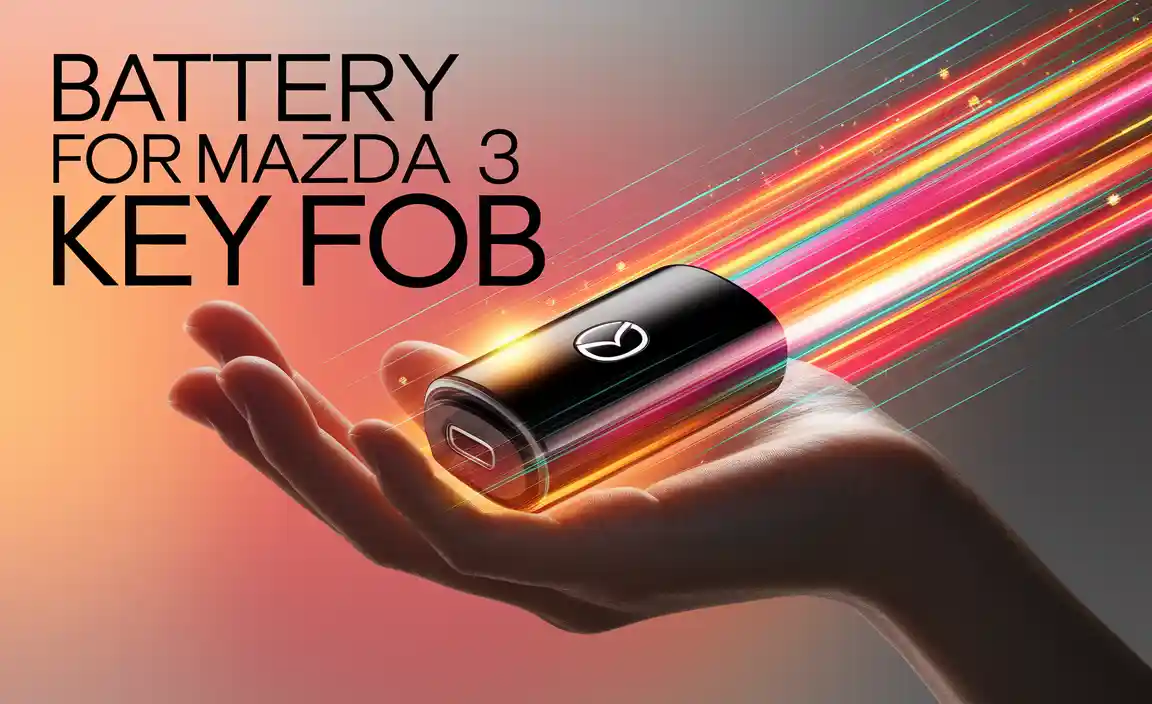Quick Summary: Looking for a cheap lead-acid car battery for your BMW? While cheaper isn’t always better, you can find budget-friendly options. Focus on verified brands, check CCA ratings, and ensure compatibility. A good quality, affordable battery is key to keeping your BMW starting reliably. Always prioritize safety during installation.
Finding a Great Deal on a Lead Acid Car Battery for Your BMW
Is your BMW’s engine making a slow, struggling sound when you turn the key? Or maybe it won’t start at all? A car battery is like the heart of your car, providing the power to get everything going. When it’s weak or dead, it can leave you stranded. Many drivers worry about the cost of replacing a BMW battery, thinking it’ll be expensive. But you can find perfectly good, affordable lead-acid car batteries that will get your car back on the road without breaking the bank. We’re here to guide you through finding the right, budget-friendly option and making sure you can handle it safely.
We’ll break down what you need to know, from understanding battery types to simple installation tips. You’ll learn how to identify a suitable battery, what features to look for, and how to avoid common pitfalls. Ready to get your BMW purring again with a reliable and affordable battery solution? Let’s dive in!
Understanding Your BMW’s Battery Needs
When you drive a BMW, you might think it needs a super fancy, expensive battery. While BMWs do have specific power requirements, the good news is that many use standard lead-acid batteries. These are the most common type and often the most affordable. The key is to match the battery’s power output to what your car needs.
Lead Acid vs. Other Battery Types
You’ll see different types of batteries out there. For most older BMW models, a traditional flooded lead-acid battery is a solid and budget-friendly choice. Newer BMWs, especially those with lots of high-tech features like start-stop technology, might recommend an AGM (Absorbent Glass Mat) battery. AGM batteries are more advanced and handle deep discharges better, but they are typically more expensive. For this guide, we’re focusing on accessible and affordable lead-acid batteries, which are still excellent for many BMWs.
Key Battery Specifications to Know
Don’t let all the numbers and letters on a battery confuse you. Here are the most important things to look for:
- Cold Cranking Amps (CCA): This is super important! CCA tells you how much power the battery can deliver to start your engine in cold weather. Check your BMW’s owner’s manual or look at your old battery for the recommended CCA rating. More CCA is generally better, especially if you live in a colder climate.
- Reserve Capacity (RC): This is how long the battery can keep your car running if the alternator fails. While less critical than CCA for starting, it’s still a good indicator of battery strength.
- Voltage: Almost all car batteries are 12 volts, so this is usually standard.
- Battery Size and Terminal Type: Batteries come in different sizes (Group Sizes) and have terminals (posts) on the top or side. You need a battery that physically fits in your BMW’s battery tray and has terminals that match your car’s cables.
For a cheap lead-acid battery for a BMW, prioritizing the correct CCA and physical fit is essential. You can often find this information online by entering your BMW’s year, make, and model into a battery retailer’s website.
Where to Find Affordable Lead Acid Batteries for Your BMW
The hunt for a “cheap lead acid car battery for BMW” doesn’t mean you have to sacrifice quality entirely. Smart shopping can land you a great deal:
1. Auto Parts Stores (Brick-and-Mortar)
Your local auto parts stores are a great starting point. Brands like EverStart (Walmart), Duralast (AutoZone), DieHard (Advance Auto Parts), and Kirkland (Costco) often have budget-friendly lead-acid options. Keep an eye out for their house brands, as these are usually priced lower.
- Pros: You can often see and touch the battery, their staff can help you find the right size, and you can usually get it installed on the spot for a small fee or even free. Many offer warranties.
- Cons: Prices might be slightly higher than online retailers.
2. Online Retailers
Websites like Amazon, eBay, and specialized online battery stores offer a vast selection. You can often find excellent deals, especially during sales events. For example, Amazon has Deka and ACDelco batteries that can be very competitively priced.
- Pros: Huge selection, competitive pricing, easy to compare specs, and convenient delivery.
- Cons: You can’t see the battery before buying, and you’ll need to handle installation yourself or find a local shop. Warranties can sometimes be trickier to deal with.
3. Warehouse Clubs (Costco, Sam’s Club)
These clubs often carry reputable brands at lower prices. Costco’s Kirkland Signature batteries are known for good value and decent warranties. Sam’s Club also offers comparable brands.
- Pros: Excellent value for money, often with good warranties.
- Cons: Membership is required, and selection might be limited to a few popular sizes.
4. Direct from Manufacturers or Discount Brands
Some brands specialize in offering more basic, affordable batteries. Look for brands like Bosch, Exide, or Banner, which might have entry-level lead-acid models that are cheaper than their premium lines. Sometimes, looking up “DIY car battery special” on Google can reveal smaller online sellers with good deals.
What Makes a “Cheap” Battery Still Reliable?
When we talk about a “cheap lead acid car battery for BMW,” we’re not talking about the absolute cheapest, lowest-quality option available. We mean a battery that offers a good balance of price and performance. Here’s what to look for:
1. Reputable Brand (Even at a Lower Price Point)
Stick to known brands. Even their most basic lead-acid models are usually built to certain standards. Brands that have been around for a while have a reputation to uphold, meaning their budget options are generally more reliable than no-name brands.
2. Sufficient CCA for Your BMW
This is non-negotiable. A cheap battery is useless if it can’t start your car, especially in the cold. Ensure the CCA rating meets or slightly exceeds your BMW’s requirements. A quick search online for “[Your BMW Model] CCA requirement” should give you the information you need. For instance, many BMW 3 Series models recommend around 600-750 CCA.
3. Warranty
Even a budget battery should come with a warranty. Look for at least a 1-year warranty, though 2-3 years is better. This protects you if the battery is faulty from the start. Understand the warranty terms – what’s covered, and how to claim it.
4. Freshness Date
Batteries degrade over time, even on the shelf. Look for a sticker on the battery indicating its manufacturing date. Batteries should ideally not be more than 6 months old when purchased. Avoid batteries that are older.
Comparing Affordable Options: A Sample Table
Here’s a look at how some common, affordable battery types might stack up. This is illustrative, and exact prices and specs vary.
| Battery Brand/Type | Estimated Price Range | Typical Warranty | Best For | Considerations |
|---|---|---|---|---|
| EverStart Maxx (Walmart) | $100 – $150 | 2-3 Years Free Replacement | Budget-conscious drivers needing reliable starting. | Good value, widely available. Check CCA for your BMW. |
| Duralast Gold (AutoZone) | $120 – $180 | 3 Years Free Replacement | Drivers wanting a bit more longevity and CCA. | Often slightly higher CCA, but also slightly higher price. |
| Kirkland Signature (Costco) | $90 – $140 | 3 Years Free Replacement | Costco members seeking strong value. | Excellent warranty for the price; check fitment carefully. |
| ACDelco Professional | $110 – $160 | 1-2 Years Replacement | Solid, moderately priced option. | Reliable performance, widely available online. |
Remember, the “best” cheap battery is the one that meets your BMW’s specific needs, fits your budget, and comes with a reasonable warranty. Always double-check compatibility using your car’s details online or by speaking with a knowledgeable store associate.
DIY Battery Replacement: Safety First!
Replacing your car battery can seem daunting, but it’s often a straightforward DIY job. Safety is the absolute priority. Batteries contain corrosive acid and can produce flammable hydrogen gas, so a few precautions go a long way.
Tools You’ll Need:
- A set of wrenches or a socket set (common sizes are 10mm, 13mm, and 17mm).
- Safety glasses.
- Work gloves (nitrile or rubber).
- A wire brush or battery terminal cleaner.
- Possibly a battery terminal puller if terminals are stuck.
- A piece of cloth or old towel.
Step-by-Step Battery Replacement:
- Park Safely: Park your BMW on a level surface and engage the parking brake. Turn off the engine.
- Locate the Battery: In many BMWs, the battery is in the trunk, often under a floor panel. Some models might have it under the hood. Consult your owner’s manual if you’re unsure.
- Wear Safety Gear: Put on your safety glasses and gloves. This protects you from acid.
- Disconnect the Negative Terminal First: This is CRITICAL for safety. Locate the negative (-) battery terminal (usually marked with a black cover or a minus sign). Use your wrench to loosen the nut holding the cable clamp. Gently twist and pull the cable off the terminal. Hook it aside so it can’t accidentally touch the battery post.
- Disconnect the Positive Terminal: Now, find the positive (+) terminal (usually marked with a red cover or a plus sign). Loosen the nut and remove the cable clamp. Keep this cable clear of the battery as well.
- Remove the Battery Hold-Down: Batteries are secured with a bracket or strap at the base or top. Use the appropriate wrench to remove the bolts holding this in place.
- Lift Out the Old Battery: Batteries are heavy! Lift with your legs, not your back. If it’s too heavy, ask for help. Carefully remove it from the car.
- Clean Battery Tray and Terminals: Use the wire brush and cleaner to scrub any corrosion off the battery tray and the cable clamps.
- Install the New Battery: Carefully place the new battery into the tray, ensuring it’s oriented correctly (positive and negative terminals in the right spots).
- Secure the Battery: Reinstall and tighten the hold-down bracket.
- Connect the Positive Terminal First: Attach the positive (+) cable clamp to the positive terminal. Tighten the nut securely.
- Connect the Negative Terminal Last: Attach the negative (-) cable clamp to the negative terminal. Tighten the nut securely.
- Test: Close the trunk or hood, get in your car, and try starting it. It should start up smoothly.
- Dispose of the Old Battery Properly: Batteries are hazardous waste. Most auto parts stores or recycling centers will take your old battery for free recycling.
Important Safety Reminders:
- NEVER disconnect the battery while the engine is running.
- ALWAYS disconnect the negative terminal first and reconnect it last.
- Avoid sparks and open flames near the battery.
- If you get acid on your skin or clothes, wash immediately with plenty of water.
For a more visual guide, many helpful videos are available on YouTube demonstrating BMW battery replacement for specific models. For example, searching “BMW E90 battery replacement” will bring up many detailed tutorials.
Maintaining Your New Battery for Longevity
Even a great deal on a cheap lead-acid battery won’t last forever if it’s not cared for. A little bit of maintenance can extend its life significantly.
Regular Cleaning:
Periodically check the battery terminals and the area around them. If you see white or blueish fuzzy corrosion, clean it off using a wire brush and a mixture of baking soda and water. This ensures a good connection and prevents power loss.
Checking Water Levels (for serviceable batteries):
Some older-style lead-acid batteries have caps that can be removed to check the electrolyte levels. If the water level is low, you can add distilled water (NEVER tap water or acid) to cover the plates. Most modern batteries are “maintenance-free” and do not require this. Your battery’s manual will tell you.
Ensuring a Good Connection:
Make sure the battery terminals remain tight and free from corrosion. A loose connection can mimic a weak battery, causing starting issues or electrical problems.
Using a Battery Tender (Optional):
If your BMW sits for long periods (weeks or months), a battery tender (or trickle charger) can keep the battery topped up and prevent it from draining. This is especially helpful if you only drive your car occasionally. For example, a NOCO Genius smart battery charger can maintain your battery without overcharging.
When a Cheap Battery Might NOT Be the Best Option
While we’re focusing on affordable lead-acid batteries, there are situations where spending a bit more is wise:
- Modern BMWs with Start-Stop Systems: These cars require specialized AGM batteries that can handle frequent, deep discharges. A standard lead-acid battery won’t last long or perform reliably in this setup and may even damage the car’s electronics.
- Extreme Climates: If you live in a region with very hot summers or extremely cold winters, a higher-quality battery with a higher CCA and Reserve Capacity rating might be worth the extra investment for better reliability.
- High-Performance or Modified Vehicles: If your BMW is heavily modified or used for performance driving, it might have higher power demands that a basic battery can’t meet.
Always consult your BMW owner’s manual or a qualified mechanic if you’re unsure whether a standard lead-acid battery is suitable for your specific model and driving conditions.
Common Questions About Cheap BMW Batteries
Q1: Can I really find a cheap but good lead-acid battery for my BMW?
Yes! Many reputable brands offer budget-friendly lead-acid batteries that are perfectly suitable for many BMW models. Focus on getting the correct CCA rating, ensuring the right size, and looking for at least a one-year warranty.
Q2: What is CCA and why is it important for my BMW?
CCA stands for Cold Cranking Amps. It measures a battery’s ability to start an engine at 0°F (-18°C). BMWs, especially in colder climates, need a decent CCA rating to start reliably. Check your owner’s manual for the recommended CCA for your specific BMW model.
Q3: How do I know if my BMW uses a standard lead-acid battery or an AGM battery?
Most older BMWs (roughly pre-2010) use standard flooded lead-acid batteries. Newer BMWs, particularly those with advanced technology like automatic start-stop functions, typically require AGM batteries. Check your owner’s manual or look at your current battery for identification (AGM batteries are sealed and labeled as such).
Q4: Where can I buy a “cheap lead acid car battery for BMW” online?
You can find affordable options on major online retailers like Amazon, eBay, or directly from auto parts store websites (e.g., AutoZone, Advance Auto Parts). Always use their vehicle lookup tools to confirm compatibility before purchasing.
Q5: Is it safe to replace my BMW battery myself?
Yes, in most cases, it is safe and manageable for a DIYer, provided you follow safety precautions meticulously. Always wear protective gear, disconnect the negative terminal first, and ensure you dispose of the old battery responsibly.
Q6: How long should a cheap car battery last?
A good quality, affordably priced lead-acid car battery typically lasts between 3 to 5 years under normal driving conditions. Proper maintenance can help maximize its lifespan.





